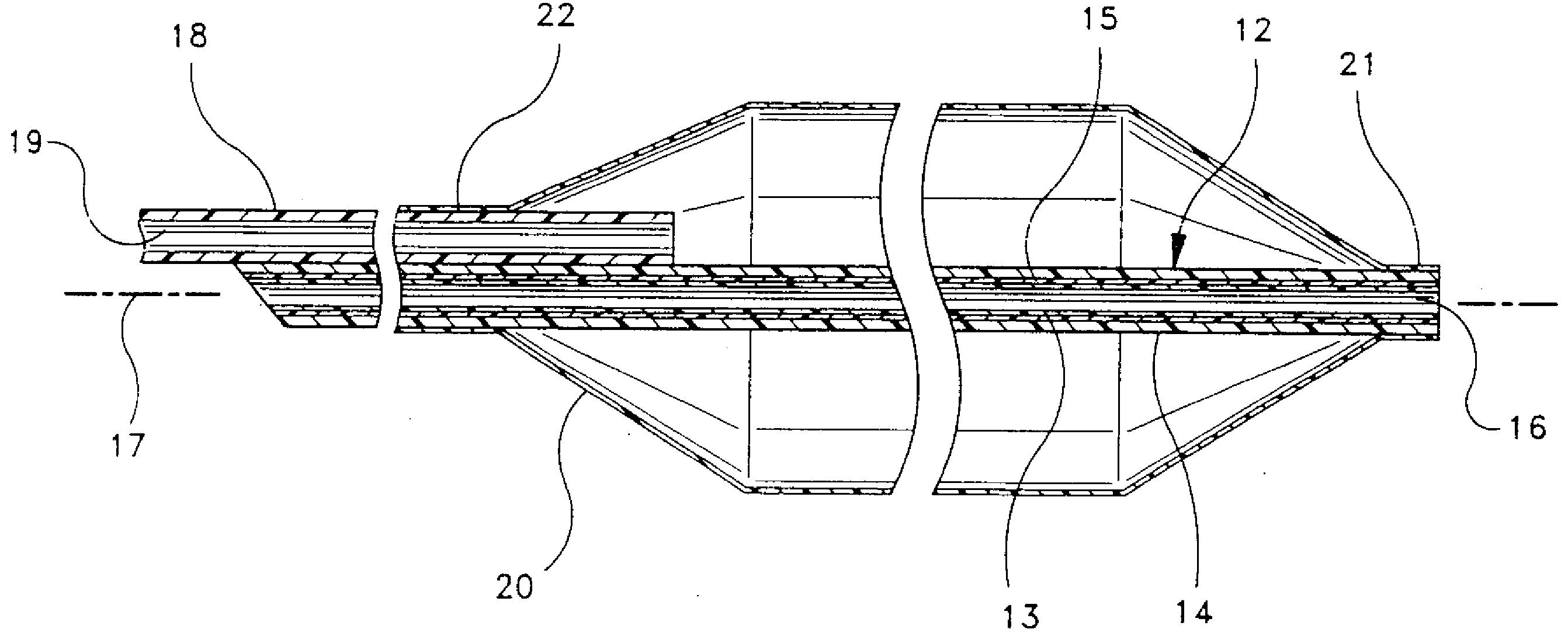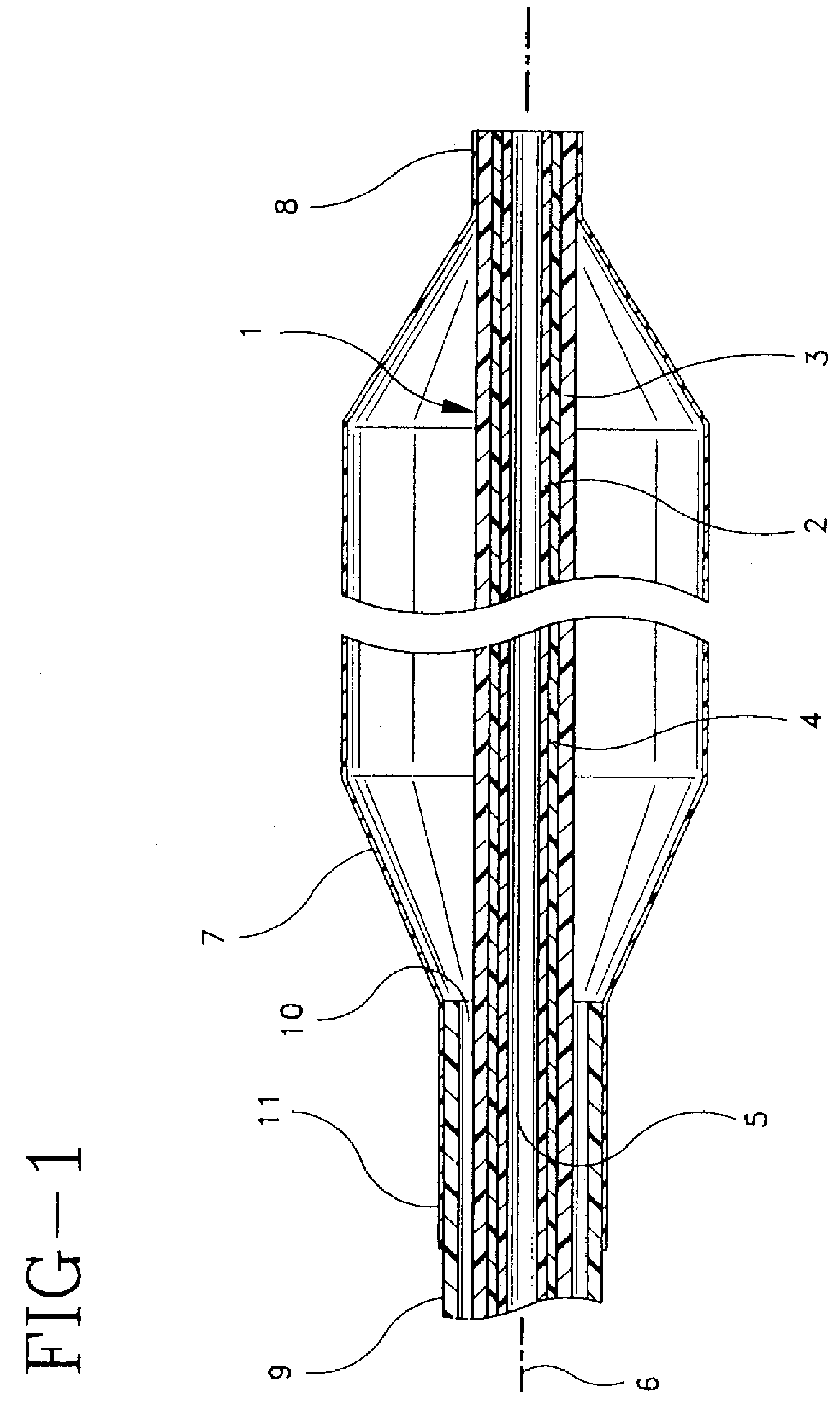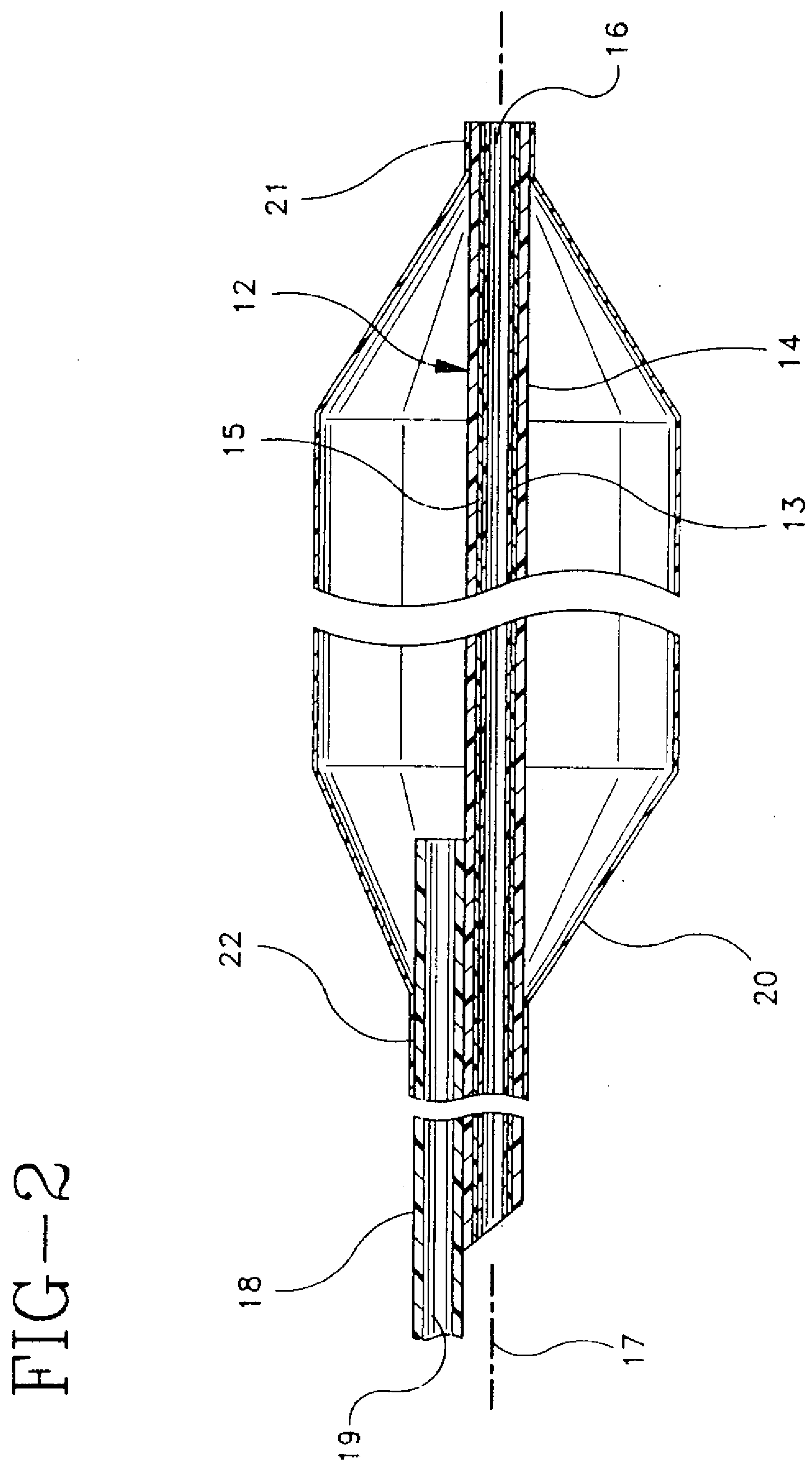Multilayer Interventional Catheter
a multi-layer, catheter technology, applied in the direction of balloon catheters, catheters, surgery, etc., can solve the problems of spiral wound guidewire capture risk, friction and clogging problem, still existent, etc., to improve the manufacture, reduce the friction coefficient, and improve the effect of quality
- Summary
- Abstract
- Description
- Claims
- Application Information
AI Technical Summary
Benefits of technology
Problems solved by technology
Method used
Image
Examples
Embodiment Construction
[0023]The interventional catheter shown in FIG. 1 comprises a catheter tube 1 formed of two superposed tubular layers of materials 2 and 3 with a tubular mediator layer 4 arranged therebetween for the adhesive anchorage of the layers 2 and 3 onto the mediator layer 4.
[0024]The tubular layers 2, 3, and 4 extend all over the length of catheter tube 1, being thus congruent in length, and the assembly of layers forming the catheter tube 1 may be obtained by the known coextrusion technology, i.e., by extruding simultaneously the inner layer 2 with the mediator layer 4 and with the outer layer 3 thereover. Layers 2 and 3 have mechanical properties differing from one another and, preferably, mediator layer 4 also has mechanical properties differing from the mechanical properties of inner and outer layers 2 and 3.
[0025]Preferably, the inner layer 2 is formed of a material with lower friction coefficient than the material forming the outer layer 3. For example, the inner layer 2 may be forme...
PUM
| Property | Measurement | Unit |
|---|---|---|
| friction coefficient | aaaaa | aaaaa |
| mechanical properties | aaaaa | aaaaa |
| length | aaaaa | aaaaa |
Abstract
Description
Claims
Application Information
 Login to View More
Login to View More - R&D
- Intellectual Property
- Life Sciences
- Materials
- Tech Scout
- Unparalleled Data Quality
- Higher Quality Content
- 60% Fewer Hallucinations
Browse by: Latest US Patents, China's latest patents, Technical Efficacy Thesaurus, Application Domain, Technology Topic, Popular Technical Reports.
© 2025 PatSnap. All rights reserved.Legal|Privacy policy|Modern Slavery Act Transparency Statement|Sitemap|About US| Contact US: help@patsnap.com



